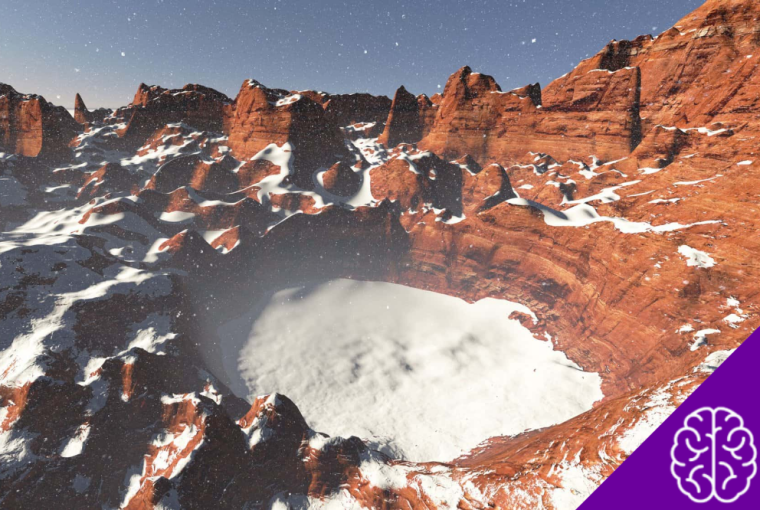Is there life on Mars? Or at least conditions for life outside of Earth? Well, we might be closer to finding out, as the European Space Agency (ESA) recently announced the discovery of a giant ice deposit on Mars. The deposit was found in the Medusae Fossae Formation, a flat and arid region located on the planet’s equator.
This scientific discovery could finally answer one of humanity’s main dilemmas, as until now, it is believed that only on Earth can living beings survive.
So, if you’re curious about the ice on Mars, continue reading with us, as we will explain in this Insight Factory guide everything about this incredible discovery of the MARSIS radar!
Is there really ice on Mars?
What makes Earth the only habitable planet in the solar system is precisely water, as no other planet has this natural element so important for human life.
However, what few people know is that YES, there is water on Mars, and it has been discovered many years ago, having been previously proven that there were ice deposits at the poles of Mars.
But the novelty comes now, where after 20 years a NASA radar found a new accumulation of water in solid state on Mars.
The giant ice was found beneath the “equator” of the Red Planet by recent research, already published in the scientific journal Geophysical Research Letters.
Understanding the history of ice on Mars
In 2007, researchers discovered a very curious deposit in the Medusa Fossae Formation, which is a rocky formation near the equator of Mars.
At the time, it was not possible to say exactly what was beneath those rocks, but the researchers knew it was not other rocks.
The radar signals indicated something less dense. However, it was still not possible to affirm that it was ice.
However, on January 20, almost 20 years after the original research, the MARSIS radar was able to study this formation in more detail, and the signals point to a gigantic layer of ice on Mars.
According to Dr. Thomas Watters, one of the authors of the study, the signals correspond to what would be expected in ice layers. These are signals similar to those found in the polar ice caps of Mars, where science has already found water in solid state.
The analysis of the MARSIS radar suggests that the ice deposit has a thickness of up to 170 meters and an area of about 200 square kilometers.
The ice is buried at a depth of about 10 meters, below a layer of dust and rocks in this flat and arid region located at the equator of the planet.
What does this discovery change for us?
The discovery of the giant ice deposit is important news for the exploration of Mars, after all, ice is a vital resource for life, and can be used as a source of water, fuel, and other materials.
The discovery also suggests that Mars may have been more humid in the past, which could have supported life.
According to radar data, the ice is so large that if it melted, it could cover the red planet with water, with a volume equivalent to the Red Sea here on Earth.
Scientists plan to continue studying the ice deposit to obtain more information about how it originated, what its composition is, and what Mars was like at the time.
Furthermore, researchers continue to consider the possibility of sending missions to Mars to explore the deposit and collect samples, after all, this is a unique discovery that can change the course of understanding about human life!


